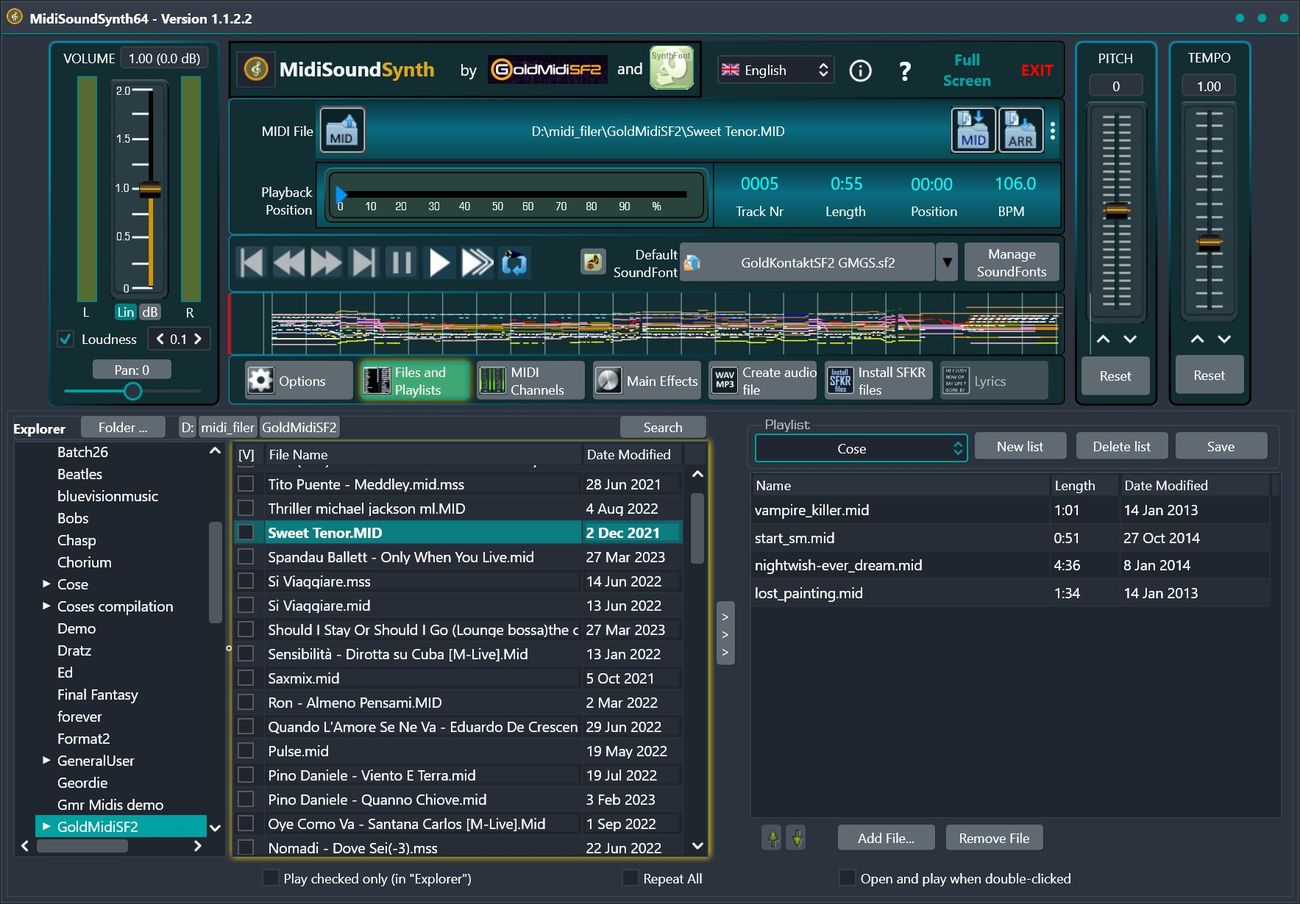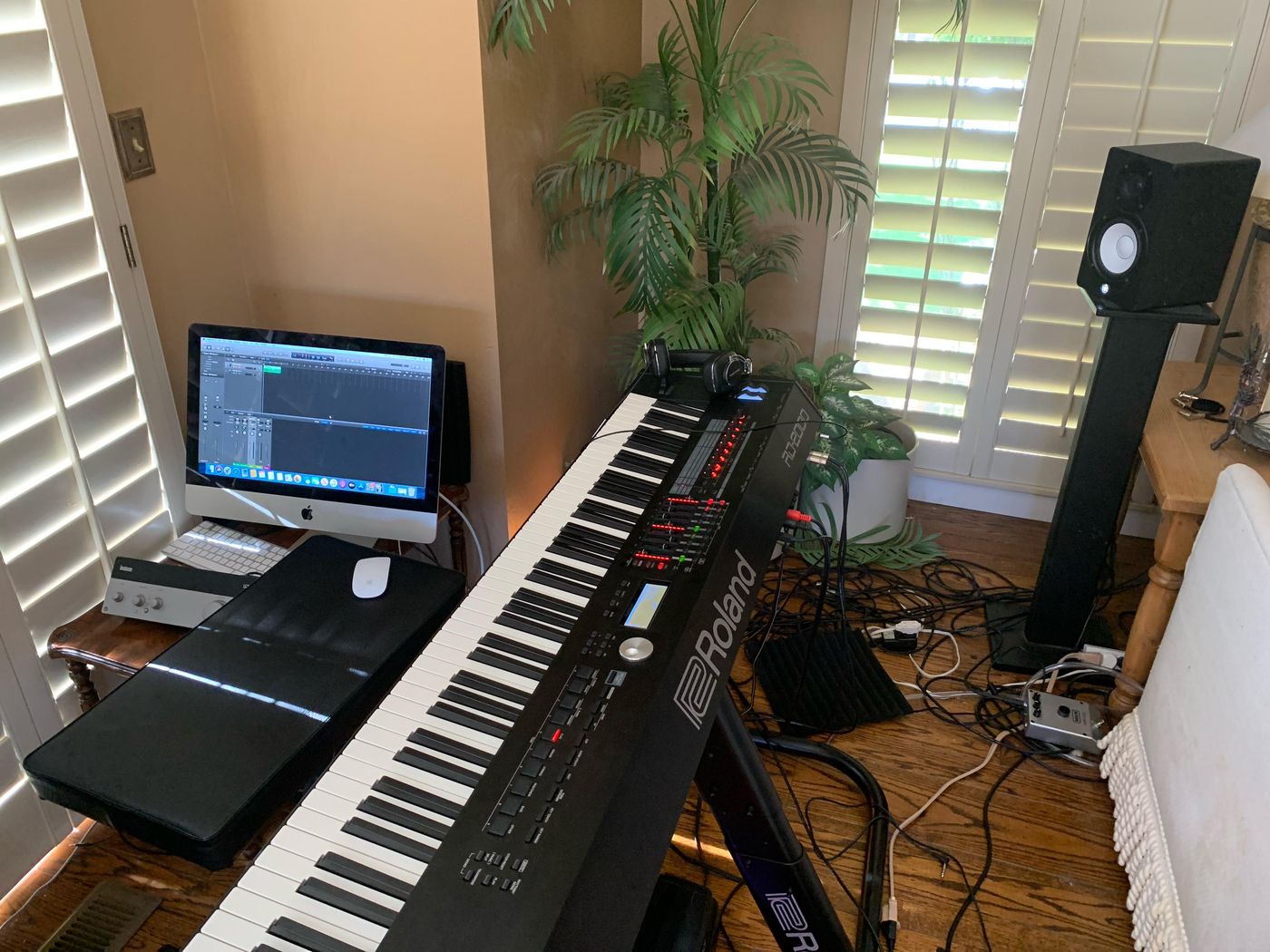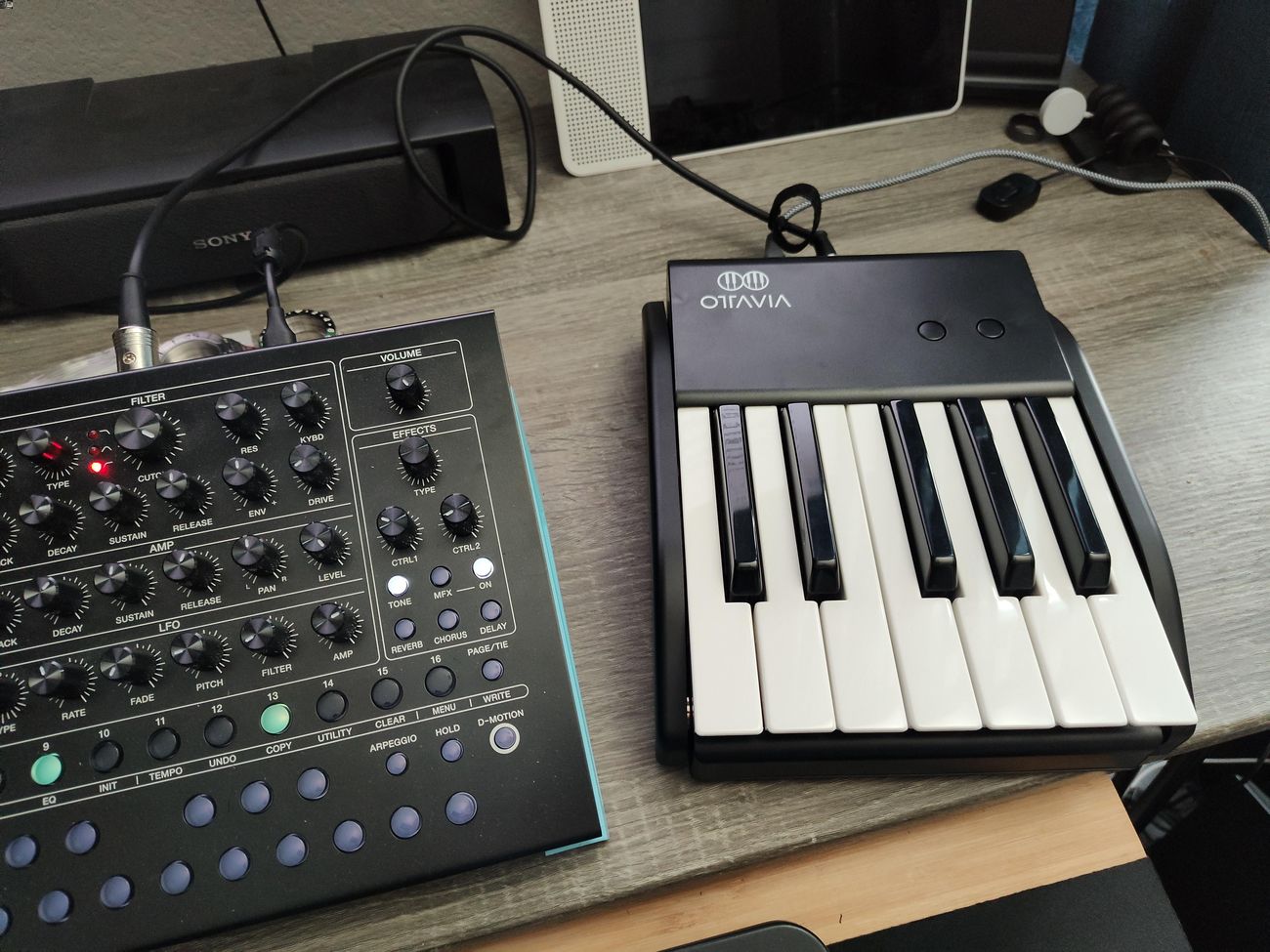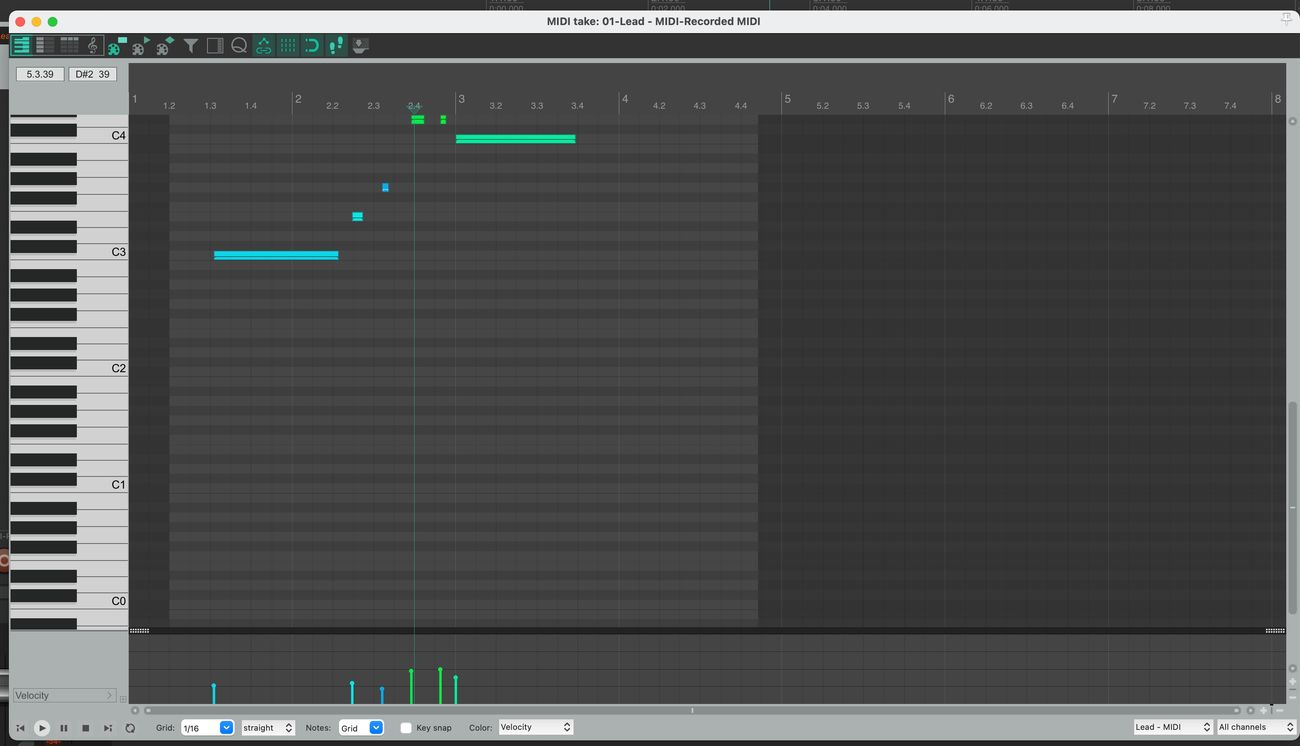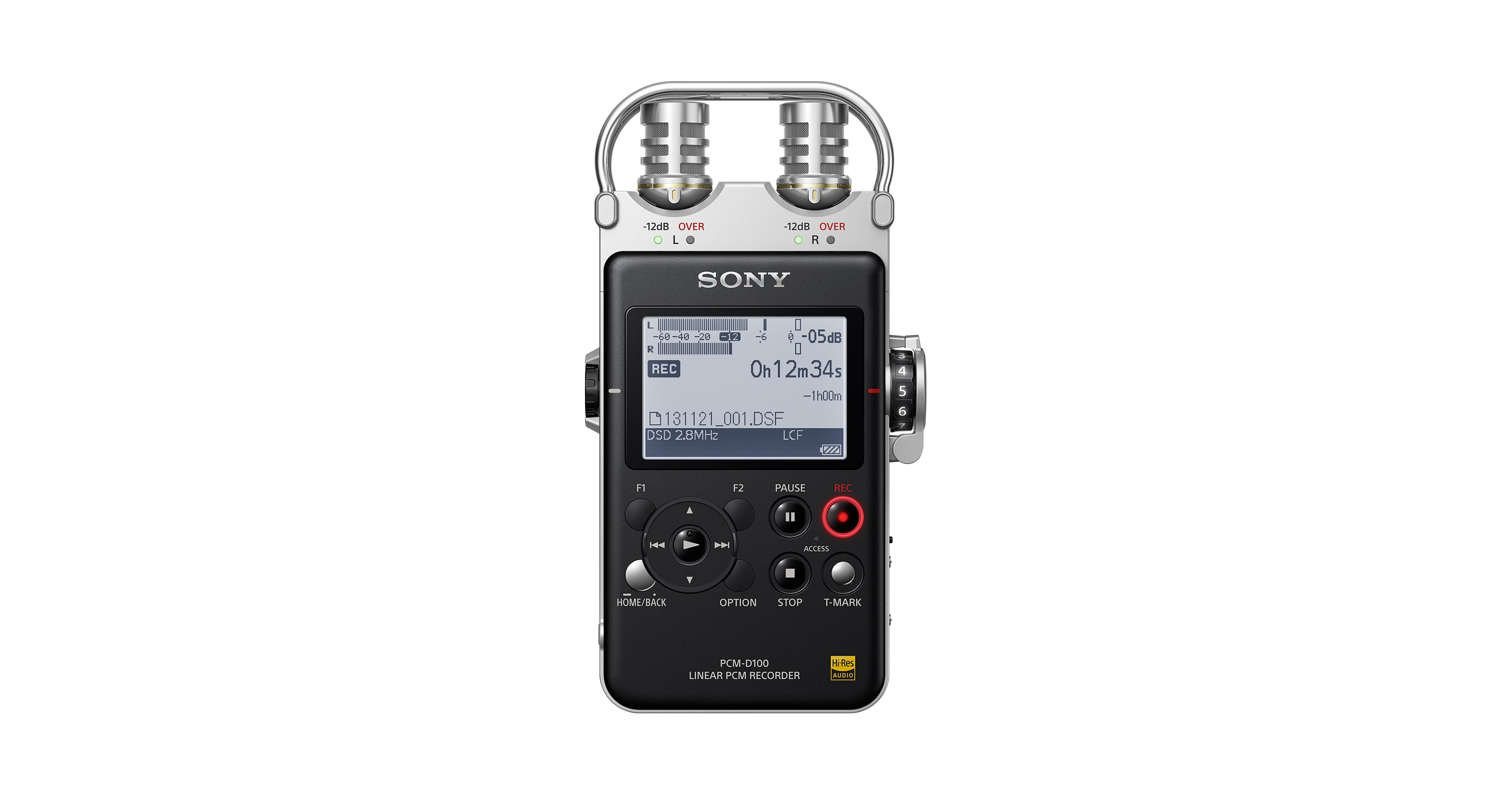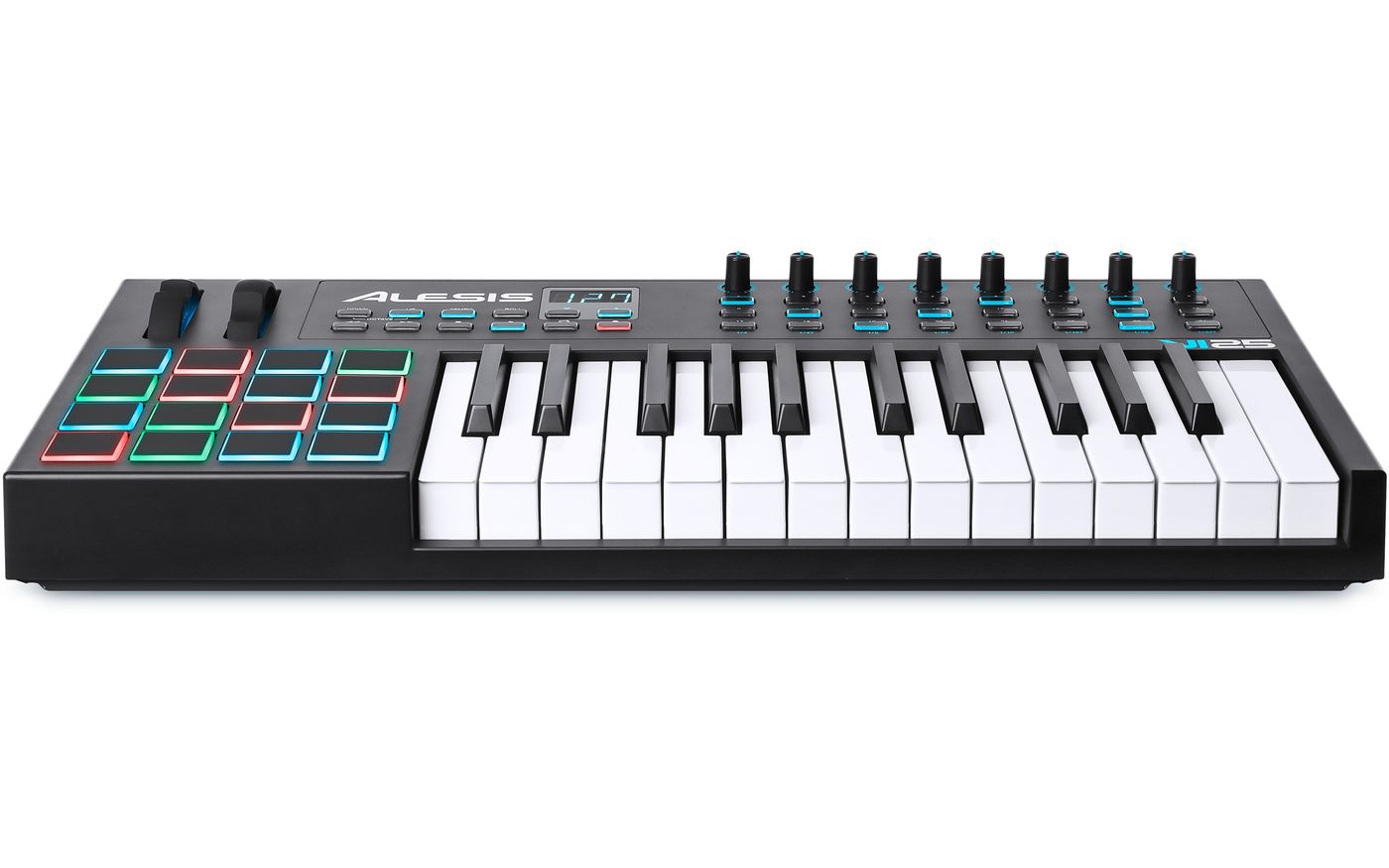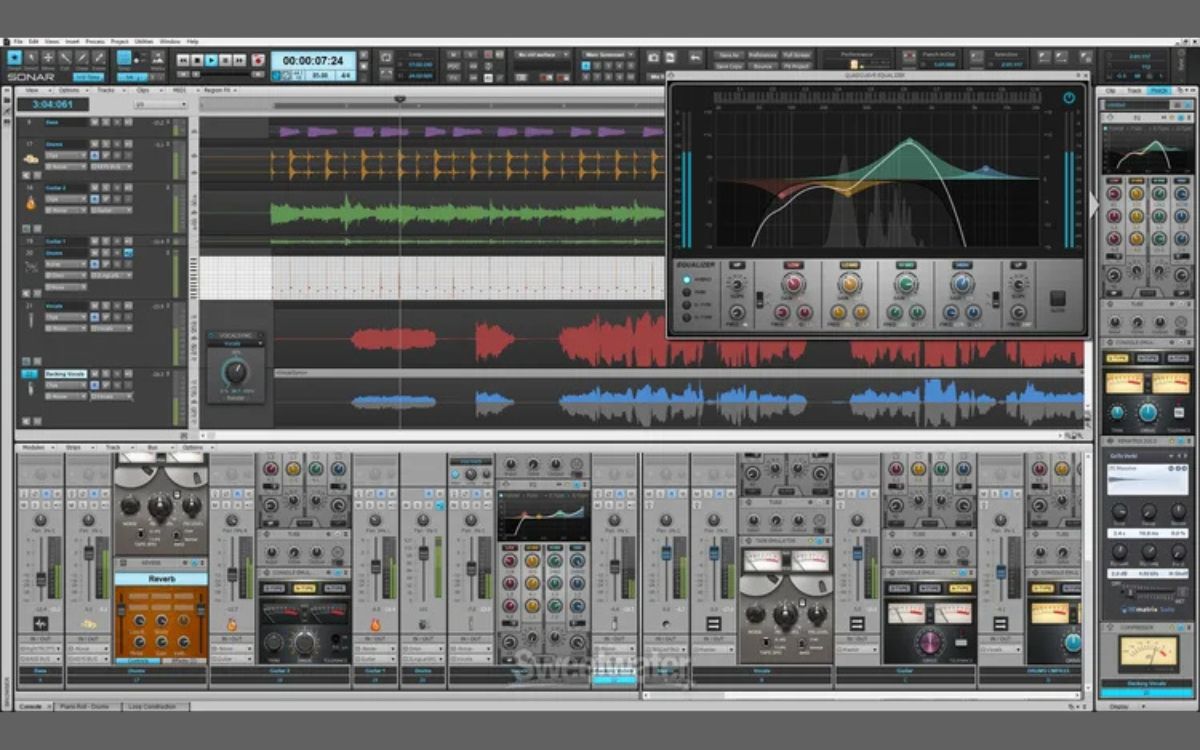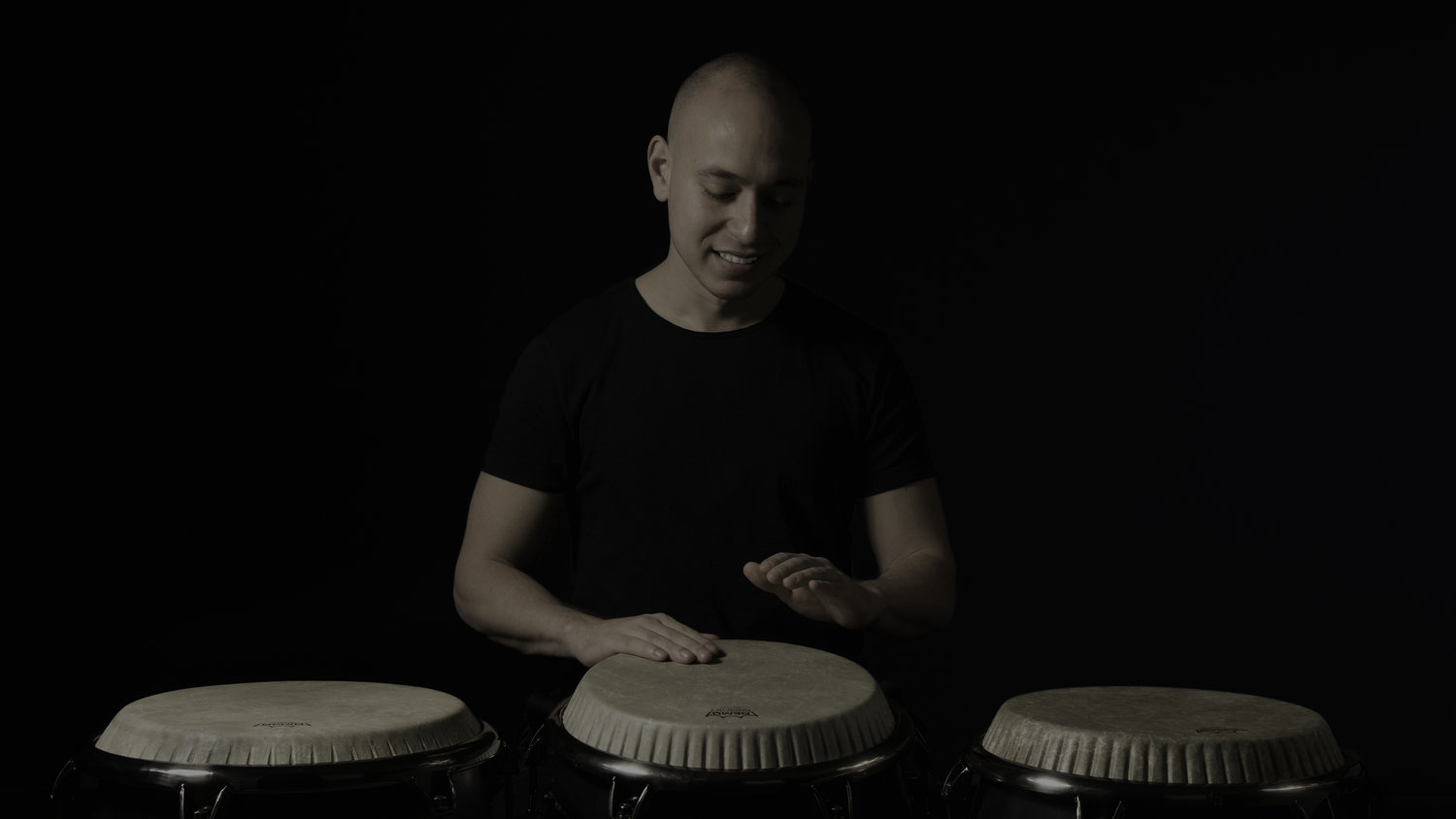Home>Production & Technology>MIDI>What Is MIDI On Instrument Recording Used For?


MIDI
What Is MIDI On Instrument Recording Used For?
Published: February 19, 2024
Discover the versatility of MIDI in instrument recording and understand its significance in music production. Learn how MIDI technology enhances the recording process.
(Many of the links in this article redirect to a specific reviewed product. Your purchase of these products through affiliate links helps to generate commission for AudioLover.com, at no extra cost. Learn more)
Table of Contents
Introduction
Music is a universal language that transcends boundaries and connects people from all walks of life. It has the power to evoke emotions, tell stories, and inspire creativity. In the realm of music production, technology plays a crucial role in shaping the sounds that captivate our ears. One such technology that has revolutionized the way musicians and producers create and record music is MIDI.
MIDI, which stands for Musical Instrument Digital Interface, is a versatile tool that has transformed the landscape of music production. It enables seamless communication between musical instruments, computers, and other electronic devices, allowing for the creation, recording, and manipulation of musical data with unparalleled precision and flexibility.
In the past, recording music often involved cumbersome and time-consuming processes, with limited room for experimentation and fine-tuning. However, with the advent of MIDI, musicians and producers gained a powerful ally that opened up a world of possibilities in the realm of instrument recording.
MIDI has not only streamlined the recording process but has also empowered musicians to explore new sonic horizons. Whether it's capturing the nuances of a grand piano, the expressiveness of a violin, or the raw energy of an electric guitar, MIDI has become an indispensable tool for preserving the essence of musical performances with unparalleled fidelity.
As we delve deeper into the realm of MIDI and its applications in instrument recording, it becomes evident that this technology has redefined the art of music production. From enabling precise note-by-note editing to facilitating seamless integration with virtual instruments, MIDI has become an indispensable asset for musicians and producers striving for sonic excellence.
In the following sections, we will explore the intricacies of MIDI, its pivotal role in instrument recording, the myriad benefits it offers, and valuable tips for harnessing its full potential. Join us on this journey as we unravel the transformative power of MIDI in the realm of music production.
Understanding MIDI
MIDI, short for Musical Instrument Digital Interface, serves as a universal language in the realm of music production. It is a communication protocol that allows electronic musical instruments, computers, and other devices to interact and exchange musical information. Unlike audio signals, which capture the actual sound produced by instruments, MIDI data represents the instructions and parameters that govern musical performance.
At its core, MIDI comprises a set of commands and messages that convey various aspects of musical performance, such as note-on and note-off messages, pitch, velocity, and control changes. These messages are transmitted in real-time, enabling seamless communication between different MIDI-compatible devices. This digital interchange of musical data empowers musicians and producers to capture, manipulate, and reproduce musical performances with remarkable precision and flexibility.
One of the key advantages of MIDI is its ability to separate musical performance from sound generation. This means that MIDI data can be used to control a wide array of virtual instruments and synthesizers, allowing musicians to explore a diverse range of sounds without the need for physical instruments. Furthermore, MIDI data can be edited and manipulated with unparalleled ease, enabling musicians to refine their performances and experiment with creative arrangements.
In addition to note-based information, MIDI also encompasses control data that governs parameters such as modulation, pitch bend, and expression. This level of control grants musicians the freedom to infuse their performances with nuanced articulations and dynamic nuances, adding a layer of expressiveness that transcends the limitations of traditional recording methods.
Moreover, MIDI is not limited to musical instruments alone. It extends its reach to encompass lighting systems, stage effects, and other multimedia elements, enabling synchronized performances that seamlessly integrate music with visual enhancements. This versatility underscores the expansive scope of MIDI and its potential to transform not only music production but also live performances and multimedia presentations.
In essence, MIDI serves as a bridge between creativity and technology, empowering musicians and producers to realize their artistic visions with unparalleled precision and boundless creativity. Its impact on the world of music production is profound, as it continues to shape the way music is created, recorded, and performed in the digital age.
MIDI in Instrument Recording
MIDI has revolutionized the landscape of instrument recording, offering an array of capabilities that have transformed the way musicians and producers capture and manipulate musical performances. When it comes to instrument recording, MIDI serves as a powerful ally, enabling precise and versatile control over the nuances of musical expression.
In traditional recording methods, capturing the essence of a musical performance often posed challenges in terms of precision and flexibility. However, with MIDI, the process undergoes a remarkable transformation. By utilizing MIDI-enabled instruments or MIDI controllers, musicians can record their performances with exceptional accuracy, capturing not only the notes played but also the subtle variations in velocity, timing, and articulation.
Moreover, MIDI facilitates seamless integration with virtual instruments and software synthesizers, allowing musicians to explore a vast sonic palette without the need for physical instruments. This opens up a world of creative possibilities, enabling musicians to experiment with different sounds, textures, and arrangements, thereby enhancing the overall depth and richness of their recordings.
Furthermore, MIDI empowers musicians to delve into the realm of note-by-note editing, offering the flexibility to fine-tune performances with precision. Whether it's correcting timing discrepancies, adjusting note velocities, or refining the dynamics of a passage, MIDI provides a level of control that transcends the limitations of traditional recording methods.
In the context of multitrack recording, MIDI enables the seamless synchronization of multiple instruments and tracks, allowing for intricate layering and arrangement of musical elements. This level of integration and synchronization lays the foundation for cohesive and harmonious compositions, as musicians can meticulously craft intricate arrangements with ease.
Another notable aspect of MIDI in instrument recording is its capacity to facilitate real-time performance capture and playback. Musicians can leverage MIDI to record their performances and subsequently manipulate the recorded data, enabling them to explore different interpretations and variations of their musical ideas.
In essence, MIDI serves as a catalyst for creativity and precision in instrument recording, offering a level of control and flexibility that transcends traditional recording methods. Its seamless integration with virtual instruments, precise editing capabilities, and synchronization prowess make it an indispensable tool for musicians and producers striving to elevate their recordings to new heights of sonic excellence.
Benefits of Using MIDI in Instrument Recording
MIDI, the Musical Instrument Digital Interface, has emerged as a game-changing asset in the realm of instrument recording, offering a plethora of benefits that have redefined the recording process and elevated the quality of musical productions.
Precision and Flexibility
One of the standout advantages of utilizing MIDI in instrument recording is the unparalleled precision and flexibility it affords. Unlike traditional recording methods that rely solely on audio signals, MIDI captures the intricate nuances of musical performances with exceptional accuracy. From capturing subtle variations in note velocities to precisely delineating the timing and articulation of each note, MIDI empowers musicians to preserve the essence of their performances with meticulous detail.
Versatility and Sonic Exploration
MIDI opens the doors to a world of sonic exploration and versatility in instrument recording. By seamlessly integrating with virtual instruments and software synthesizers, musicians can access an extensive array of sounds and textures without the need for physical instruments. This flexibility enables artists to experiment with diverse musical timbres, explore new sonic landscapes, and craft compositions that transcend the constraints of traditional instrument recording.
Note-by-Note Editing Capabilities
Another compelling advantage of MIDI is its capacity for note-by-note editing, offering musicians the ability to refine and perfect their performances with surgical precision. Whether it's correcting timing discrepancies, adjusting note velocities, or fine-tuning the dynamics of a passage, MIDI provides a level of control that empowers musicians to sculpt their recordings with meticulous attention to detail.
Multitrack Synchronization and Arrangement
MIDI facilitates seamless synchronization of multiple tracks and instruments, laying the groundwork for intricate multitrack arrangements. This capability empowers musicians to layer and arrange musical elements with precision, resulting in cohesive and harmonious compositions. The ability to synchronize diverse musical elements with ease enhances the depth and complexity of instrument recordings, fostering a rich and immersive sonic experience.
Real-Time Performance Capture and Playback
With MIDI, musicians can capture their performances in real time and subsequently manipulate the recorded data, enabling them to explore different interpretations and variations of their musical ideas. This real-time flexibility empowers artists to experiment with diverse musical expressions, fostering a dynamic and exploratory approach to instrument recording.
In essence, MIDI serves as a catalyst for precision, creativity, and sonic exploration in instrument recording, offering a suite of benefits that elevate the recording process to new heights of artistry and technical excellence. Its seamless integration with virtual instruments, precise editing capabilities, and synchronization prowess make it an indispensable asset for musicians and producers striving to realize their creative visions with unparalleled fidelity and depth.
Tips for Using MIDI in Instrument Recording
When harnessing the power of MIDI in instrument recording, certain tips and best practices can significantly enhance the recording process and elevate the quality of musical productions. Here are valuable insights to optimize the utilization of MIDI in instrument recording:
1. Instrument Selection and Setup
Select MIDI-compatible instruments and controllers that align with your artistic vision. Ensure that the instruments are properly calibrated and connected to your recording setup to facilitate seamless communication and accurate performance capture.
2. Embrace Expressiveness
Leverage MIDI's expressive capabilities by incorporating nuances such as velocity sensitivity, pitch bend, and modulation. These nuances add depth and authenticity to your recordings, infusing them with a human-like touch that transcends the realm of traditional recording methods.
3. Precision in Performance
Strive for precision in your performances when recording with MIDI. Pay attention to timing, dynamics, and articulation, as MIDI's ability to capture minute details empowers you to convey the subtleties of your musical expression with remarkable accuracy.
4. Real-Time Monitoring and Adjustment
Utilize real-time monitoring to assess the nuances of your MIDI performances as they unfold. This allows for immediate adjustments and refinements, ensuring that your recordings encapsulate the essence of your musical intent with clarity and finesse.
5. Layering and Arrangement
Explore the potential of MIDI in layering and arranging musical elements. Take advantage of MIDI's multitrack capabilities to synchronize and harmonize diverse instruments, creating rich and immersive compositions that showcase the depth and complexity of your musical vision.
6. Experiment with Virtual Instruments
Embrace the versatility of MIDI by experimenting with virtual instruments and software synthesizers. Delve into a diverse range of sounds and textures, allowing your creativity to flourish as you explore new sonic landscapes and possibilities.
7. Note Editing and Refinement
Leverage MIDI's note-by-note editing capabilities to refine your performances with precision. Whether it involves correcting timing discrepancies, adjusting note velocities, or refining the dynamics of individual notes, meticulous editing can elevate the polish and coherence of your recordings.
8. Dynamic Interpretation
Embrace dynamic interpretation of your MIDI performances, allowing for variations and expressive nuances. MIDI empowers you to capture the ebb and flow of musical expression, enabling you to infuse your recordings with a sense of vitality and emotional resonance.
9. Collaborate and Iterate
Engage in collaborative exploration with fellow musicians and producers, leveraging MIDI's flexibility to iterate and refine musical ideas. The seamless exchange of MIDI data fosters a dynamic and iterative approach to musical creation, opening doors to new possibilities and creative synergies.
10. Continuous Learning and Experimentation
Embrace a mindset of continuous learning and experimentation with MIDI. Stay abreast of new technologies, techniques, and creative approaches that harness the potential of MIDI in instrument recording, allowing your artistic journey to evolve and flourish.
By integrating these tips into your approach to using MIDI in instrument recording, you can unlock the full potential of this transformative technology, elevating the quality and depth of your musical productions with precision, creativity, and expressive artistry.
Conclusion
In conclusion, the impact of MIDI on instrument recording is nothing short of revolutionary. This versatile technology has transcended the boundaries of traditional recording methods, empowering musicians and producers to capture, manipulate, and craft musical performances with unparalleled precision and creativity. From its foundational role in facilitating seamless communication between musical instruments and computers to its transformative influence on the recording process, MIDI has redefined the art of music production.
Through the lens of MIDI, the recording process has evolved into a dynamic and expressive endeavor, where artists can meticulously sculpt their musical visions with a level of detail and nuance that was previously unattainable. The precision and flexibility offered by MIDI in capturing performances, editing note-by-note, and synchronizing multitrack arrangements have elevated the quality and depth of instrument recordings, fostering a new era of sonic excellence.
Furthermore, the seamless integration of MIDI with virtual instruments and software synthesizers has expanded the sonic horizons available to musicians, enabling them to explore a rich tapestry of sounds and textures without limitations. This versatility has sparked a wave of creative exploration, allowing artists to push the boundaries of traditional instrumentation and embark on sonic journeys that transcend the constraints of physical instruments.
As we navigate the ever-evolving landscape of music production, MIDI stands as a beacon of innovation and artistic empowerment. Its capacity to capture the nuances of musical expression, facilitate real-time performance manipulation, and foster collaborative creativity underscores its enduring relevance in the realm of instrument recording.
In essence, MIDI has not only reshaped the technical aspects of instrument recording but has also kindled a spirit of boundless creativity and sonic exploration. It has become an indispensable tool for musicians and producers, serving as a conduit for translating artistic visions into immersive and evocative musical experiences.
As we look to the future, the transformative power of MIDI will continue to inspire and propel the evolution of music production, shaping the sounds that resonate with audiences and perpetuating the timeless allure of musical expression. With MIDI as a steadfast ally, the journey of instrument recording is poised to unfold with limitless potential, offering artists the tools and canvases to paint sonic landscapes that captivate and inspire generations to come.

